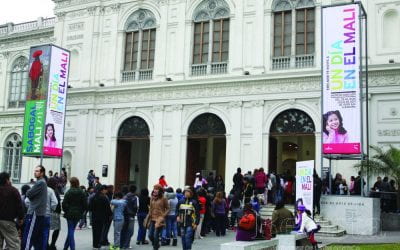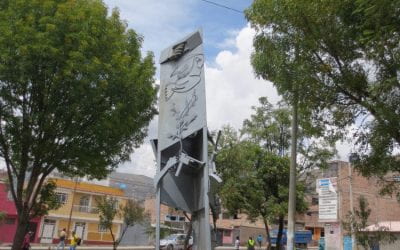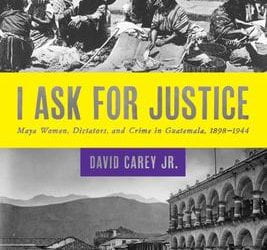Gastón Acurio: A Recipe for Success
A Harvard Business School Case Study
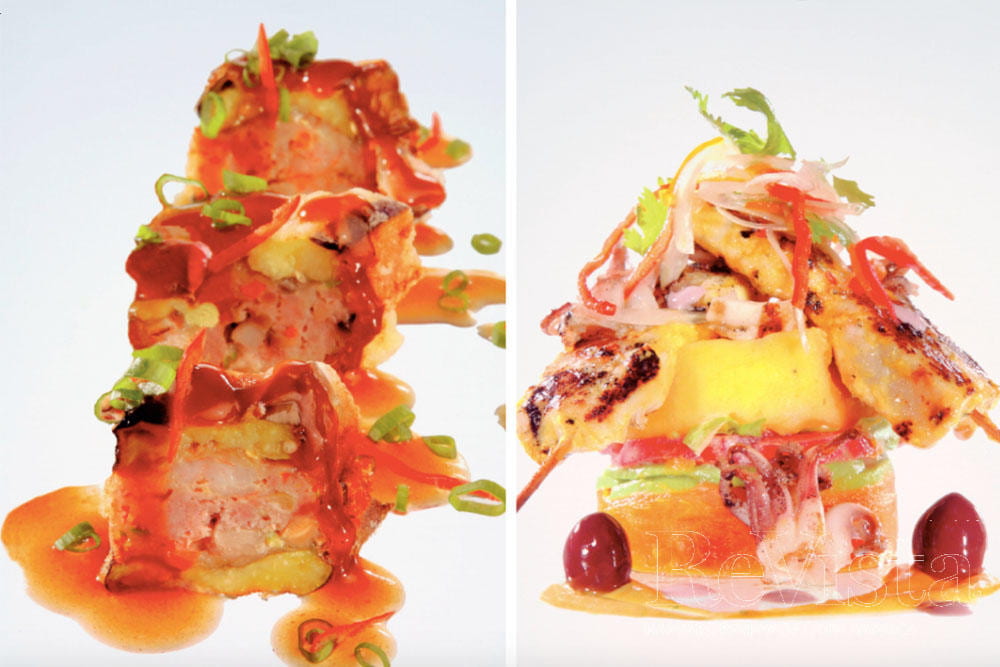
From left to right: A cutting-edge fusion dish from Peru’s most famous chef’s first restaurant, Astrid y Gastón. Gastón gave Tony Custer several delicious recipes for his first volume and has done so again for the second volume. His gastronomic empire, including restaurants of the Astrid y Gastón, La Mar, Tanta, Panchita, Madam Tusan concepts, span the globe; Rafael Osterling is one of Peru’s very best chefs and, in Custer’s opinion, would certainly be multi-starred if Michelin’s Red Guide covered Peru. “His creativity blended with unerring and truly delicious execution, make his restaurants, Rafael and Mercado among them, some of the best in town,” Custer observes. Photos courtesy of Tony Custer, The Art of Peruvian Cuisine.
In the fall of 2012, my good Peruvian friend, Germán Echecopar, a professor at Universidad Adolfo Ibáñez in Chile, approached me to consider developing a teaching case on Gastón Acurio, the well-known Peruvian chef and restaurateur.
As executive director of the Harvard Business School Latin America Research Center (LARC), based in Buenos Aires, I helped HBS faculty with their field research in the region. When I first took the job in November 1999, I expressed my interest in also contributing to the development of social capital in the region; that is, to the enhancement of relationships between our faculty and business and academic leaders in Latin America. During the past 14 years, I’ve found—with the support of HBS and DRCLAS—that the creation of intellectual capital and the enhancement of social capital are not always parallel paths. They often come together with mutual contributions.
The beauty of my job with HBS was that I often was given the opportunity to convene talent from farflung places to make our research the absolutely best possible. Most times I found myself on the “buying” end, looking to provide our faculty with leads that satisfied their interest. But sometimes—as in the case of my Peruvian friend’s proposal—I received interesting field research opportunities. I then had to “sell” those leads to faculty whose line of work was compatible with the lead at hand. I referred to case leads as “orphans,” and our faculty as “foster parents.” I viewed our job at the LARC as bringing orphans together with happy foster parents.
In the Acurio case, Professor Michael Norton was the first name that came to mind. I had collaborated with Mike in the development of a teaching case on El Bulli, the famous Catalonian restaurant near Barcelona. He immediately became interested and engaged Anat Keinan, a HBS colleague, to work with us. I, in turn, recruited Cintra Scott, a LARC research associate. The team was then in place: Keinan, Norton, Echecopar, and Scott, with Herrero providing support from the sidelines.
The Advent of Peruvian Cuisine
I had done quite a bit of work with another HBS faculty member, Rohit Deshpandé, who had constructed a robust body of work on widely recognized products and services that became characteristic of their countries of origin. Such was the case of Colombian coffee or of Indian yoga, for instance. But his research also addressed businesses that were not necessarily perceived as being natural exponents of the countries where they developed. Such was the case of Mexican beer, Turkish chocolate, “New World” wines, and U.S. soybean sauce, for example. Deshpandé called it “the Provenance Paradox.”
Cuisine had not been, in my mind, an obvious development opportunity for Peru. Yet, the country had become a renowned world leader, along with traditional European players like France, Italy and Belgium. My first exposure to this particular Peruvian success had come from reading the first volume of my good friend Tony Custer’s book titled The Art of Peruvian Cuisine. Tony, as pointed out on the Amazon website, “shows Peruvian food as a visual work of art.” The book was first published in 2000, and it has sold more than 85,000 copies. Tony went on to produce The Art of Peruvian Cuisine, Vol. II in 2010. Custer’s work has made an important contribution to the country’s image, receiving broad media coverage and inspiring other authors to write about Peruvian food.
Peruvian cuisine gained international acclaim toward the end of the 20th century, gaining momentum in the 2000s: on September 10, 2011, Katy McLaughlin wrote an article titled “The Next Big Thing: Peruvian Food,” in the Wall Street Journal. The following year, tourist-ranking specialist World Travel Awards elected Peru as “World’s Leading Culinary Destination 2012.” Gastón Acurio was at the forefront of this evolution; he received the Global Gastronomy Award 2013.
With one out of every five Peruvians employed in the sector, the government recognized its importance with a policy paper entitled “Peruvian Gastronomy for 2021: Guidelines for a Development Program of Peruvian Gastronomy in the Framework of the Bicentenary Plan” by the National Center for Strategic Planning (CEPLAN).
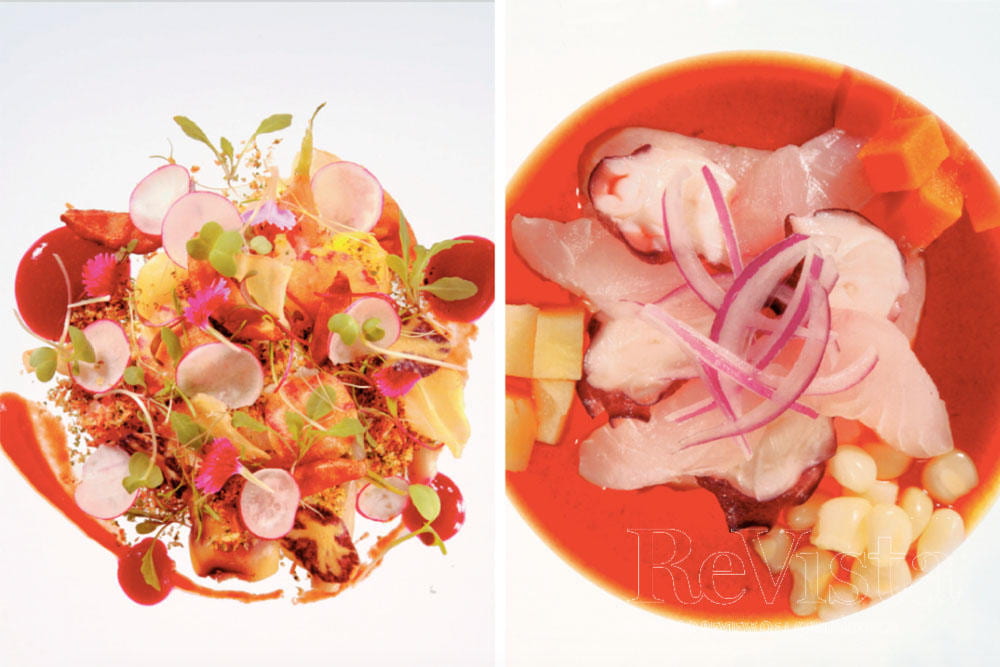
From left to right: A dish from Mercado: “The idea of this dish,” according to Diego Muñoz, “is to imitate what we see in Nature, starting with a hot garlic foam, then the most typical root crops, followed by an imitation ‘soil’ made of potatoes and onions; topped with the greens of the root crops represented; and completing the dish with flowers to imply the beginning of a new cycle; Yakir Sato is a first rate young chef who works with his father, Humberto, chef creator of Costanera 700-a pioneering Peruvian seafood fusion restaurant. Photos courtesy of Tony Custer, The Art of Peruvian Cuisine.
Peruvian cuisine combines local ingredients with native Quechuan, colonial Spanish, immigrant West African, Japanese, Chinese, Italian and other cooking traditions. Some staples in a typical Peruvian menu included include ceviche, tiraditos (another raw fish dish, like ceviche, influenced by the Japanese, but without onions) and causas (mashed or whipped potatoes mixed with flavorful additions, including chilies, seafood and/or avocado). Other notable dishes included papas a la huancaína (a potato dish with a slightly spicy cream sauce), anticuchos (skewered, marinated heart meat traditionally sold by street carts), lomo saltado (meat stir-fried with red onions, chili peppers, tomatoes, and French fries), and ají de gallina (a spicy creamed chicken dish with chili peppers).
The Gastón Acurio Case
Acurio Restaurantes’ Astrid y Gastón was the first Peruvian restaurant to be ranked among the World’s 50 Best Restaurants. It arrived on the list as No. 35 in 2012, climbing to No. 14 in 2013. A former chef at Acurio Restaurantes, Virgilio Martínez, went on to found his own restaurant, Central, and also made the list at No. 50 in 2013, scooting past four places above Astrid y Gastón, No. 18 in 2014. Thus, Peru counted with two restaurants among the top 20, the only Latin American country to accomplish that feat (when counting the top 50, Brazil also had two restaurants, and Mexico one).
Acurio seemed destined to follow in his father’s footsteps and become a lawyer and a politician, but his passion for cooking drove him to the Cordon Bleu, the world-famous culinary French academy. At the Cordon Bleu he met and then married an aspiring pastry chef from Germany named Astrid Gutsche. The newlyweds moved from Europe to Peru in 1994 to start a fine French restaurant in the capital city of Lima—a brave move in a country still reeling from violence at the hands of insurgent groups, not to mention a climate of economic instability. Despite the long odds, Astrid y Gastón became a resounding success. It gave birth to what was to become a small culinary empire: Acurio Restaurantes (AR).
In early 2014, AR consisted of a portfolio of 32 restaurants in 11 countries on three continents. The restaurants were organized under nine different brands, with each corresponding to a different concept and a distinct “touch and feel.” Brand personalities were built on carefully selected details, including the textures and colors of furniture and the typography of the menu.
Acurio did not own all 32 restaurants. The flexibility evidenced by the different concepts of the restaurants extended to their ownership. In foreign locations, AR resorted to a franchise model. A single franchisee ran six restaurants in Chile, where annual sales ranged from $12 to $14 million. In Colombia, each of the two restaurants in Bogotá operated as separate franchises. In the rest of Latin America and in Spain, AR also used the franchise model. In contrast, the company introduced restaurants in the United States in the form of partnerships with locals, who made the initial investment, and paid a 3-5 percent management fee in exchange for a 50 percent ownership.
Ambassador Acurio
Irzio Pinasco, AR’s partner and chief operating officer since 2006, explained to me why he joined Acurio, observing, “I attended a chat that Gastón gave to students of University of the Pacific, in Lima, and I was moved by his vision.”
Acurio viewed his cuisine as an instrument to promote Peru in the rest of the world. Furthermore, he thought of Peruvian gastronomy as being a collective effort:
The task of globalizing Peruvian cuisine goes beyond any given company; we need these marvelous restaurants and we have to incorporate a business culture so they can grow out of Peru. They are excellent with the dish, but they must understand that a business culture is necessary for investors to bet on them. We’re not competing with each other, we’re on the same team; we’re all part of the best Peruvian all-star team trying to win the World Cup.
Gastón Acurio’s Likely Challenges
Acurio has proven to be a leader within the Peruvian cuisine market and in the world arena, active not just as a virtuous chef but also as a successful businessman and a sensitive ambassador for his country. His firm has been flexible in its approach to foreign markets, adopting different kinds of associations with local partners and reacting quickly to hurdles that led to potential failures.
One of Acurio’s challenges going forward will probably be managing and growing the nine different brands that characterize its 32 restaurants. When asked whether nine concepts were indeed necessary, Pinasco replied that the diversity of brands and profiles provided the firm with maximum flexibility to adapt to a particular country, city or neighborhood. He contended that the concepts were complementary, and that they could co-exist in adjacent locations without cannibalizing sales from each other.
Related Articles
The Violence of the VIP Boxes
English + Español
In Peru, the upper class does not like to mix with those they consider different or inferior. Their maids on the beaches south of Lima are not allowed to swim in club pools and, sometimes, not even in the ocean. The VIP boxes at sports and theater events maintained by the government are a public display of a private practice that reproduces in the public sphere the worst aspect of private hierarchical structuring.
Peace and Reconciliation
English + Español
Eleven years have gone by since the Peruvian Truth and Reconciliation Commission presented its final report. The report reconstructed the history of many cases of massacres, tortures, murders and other serious crimes. At the same time, it contributed an interpretation of the…
I Ask for Justice: Maya Women, Dictators, and Crime in Guatemala, 1898–1944
On May 10, 2013, General Efraín Ríos Montt sat before a packed courtroom in Guatemala City listening to a three-judge panel convict him of genocide and crimes against humanity. The conviction, which mandated an 80-year prison sentence for the octogenarian, followed five weeks of hearings that included testimony by more than 90 survivors from the Ixil region of the department of El Quiché, experts from a range of academic fields, and military officials.

